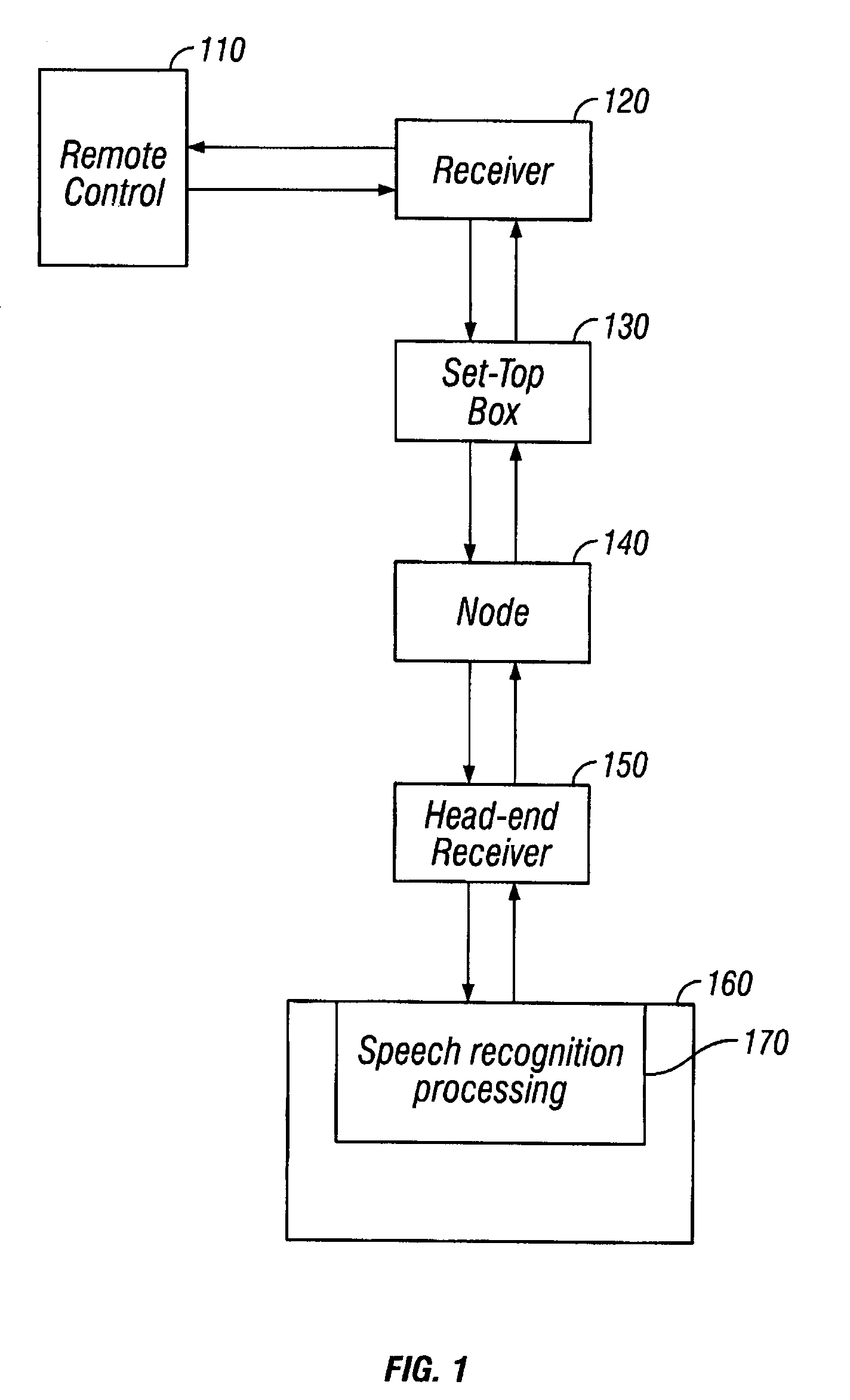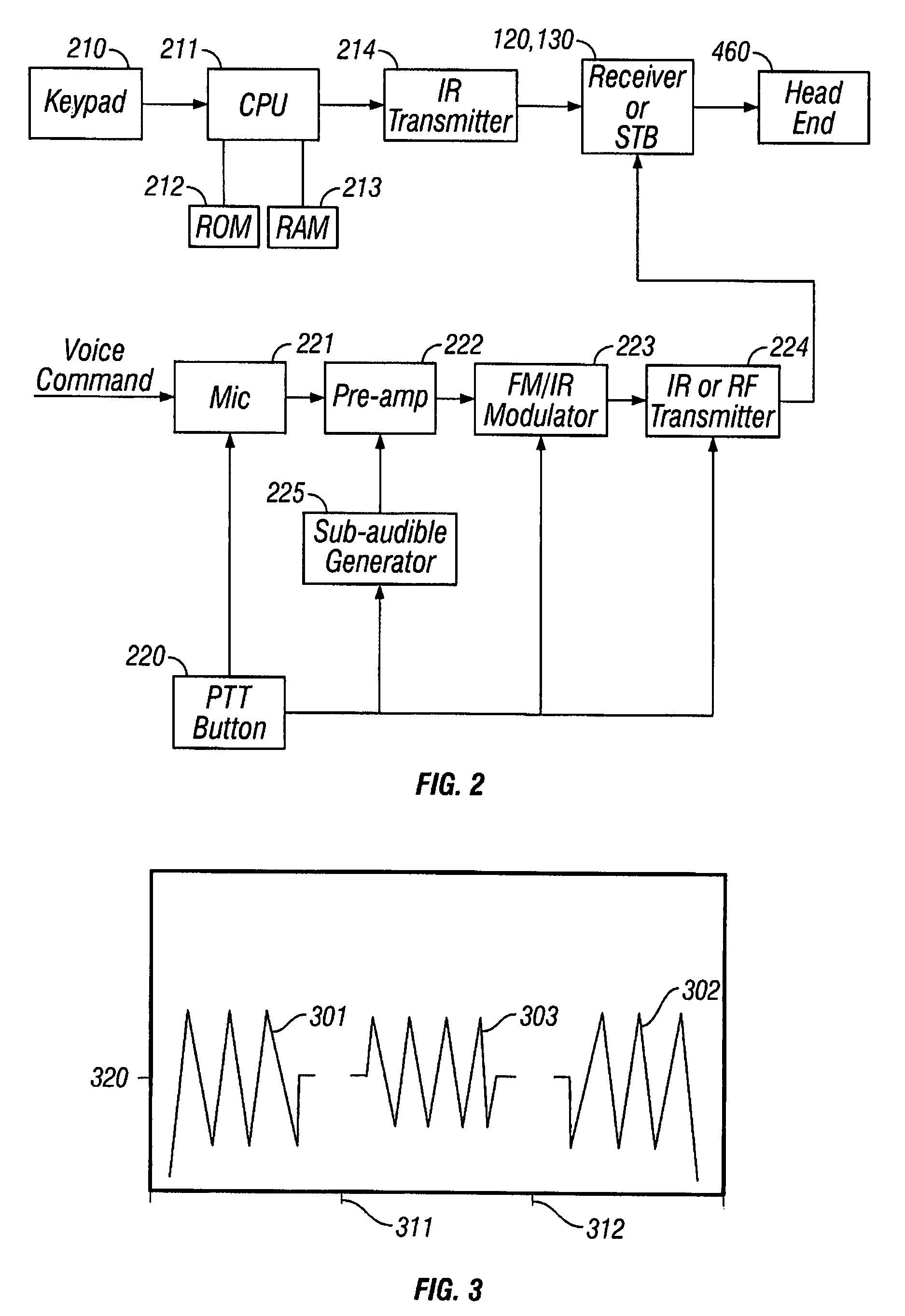Method and apparatus for voice control of a television control device
a control device and voice technology, applied in the field of voice control electronic devices, can solve the problems of increasing the cost of individual units, and increasing the size of the device,
- Summary
- Abstract
- Description
- Claims
- Application Information
AI Technical Summary
Benefits of technology
Problems solved by technology
Method used
Image
Examples
Embodiment Construction
[0024]FIG. 1 is an operational diagram illustrating a preferred embodiment of the voice control system which, for purposes of example, is an interactive television voice control system. Those skilled in the art will appreciate that other systems may be used in connection with the invention herein, such as information browsing system and representational process control systems.
[0025]A remote control 110 receives voice commands from a user through a microphone preferably located within the remote control 110. The remote control wirelessly transmits the voice commands to a wireless receiver (RECEIVER) 120 that converts the wireless signal to a wired signal. The wireless transmission is typically infrared. Ultrasonic, radio, or other wireless transmissions are also contemplated.
[0026]The RECEIVER 120 transmits the voice command to a television controller such as a set-top box 130. Transmissions between the RECEIVER and the set-top box may be unidirectional or bi-directional. The RECEIV...
PUM
 Login to View More
Login to View More Abstract
Description
Claims
Application Information
 Login to View More
Login to View More - R&D
- Intellectual Property
- Life Sciences
- Materials
- Tech Scout
- Unparalleled Data Quality
- Higher Quality Content
- 60% Fewer Hallucinations
Browse by: Latest US Patents, China's latest patents, Technical Efficacy Thesaurus, Application Domain, Technology Topic, Popular Technical Reports.
© 2025 PatSnap. All rights reserved.Legal|Privacy policy|Modern Slavery Act Transparency Statement|Sitemap|About US| Contact US: help@patsnap.com



